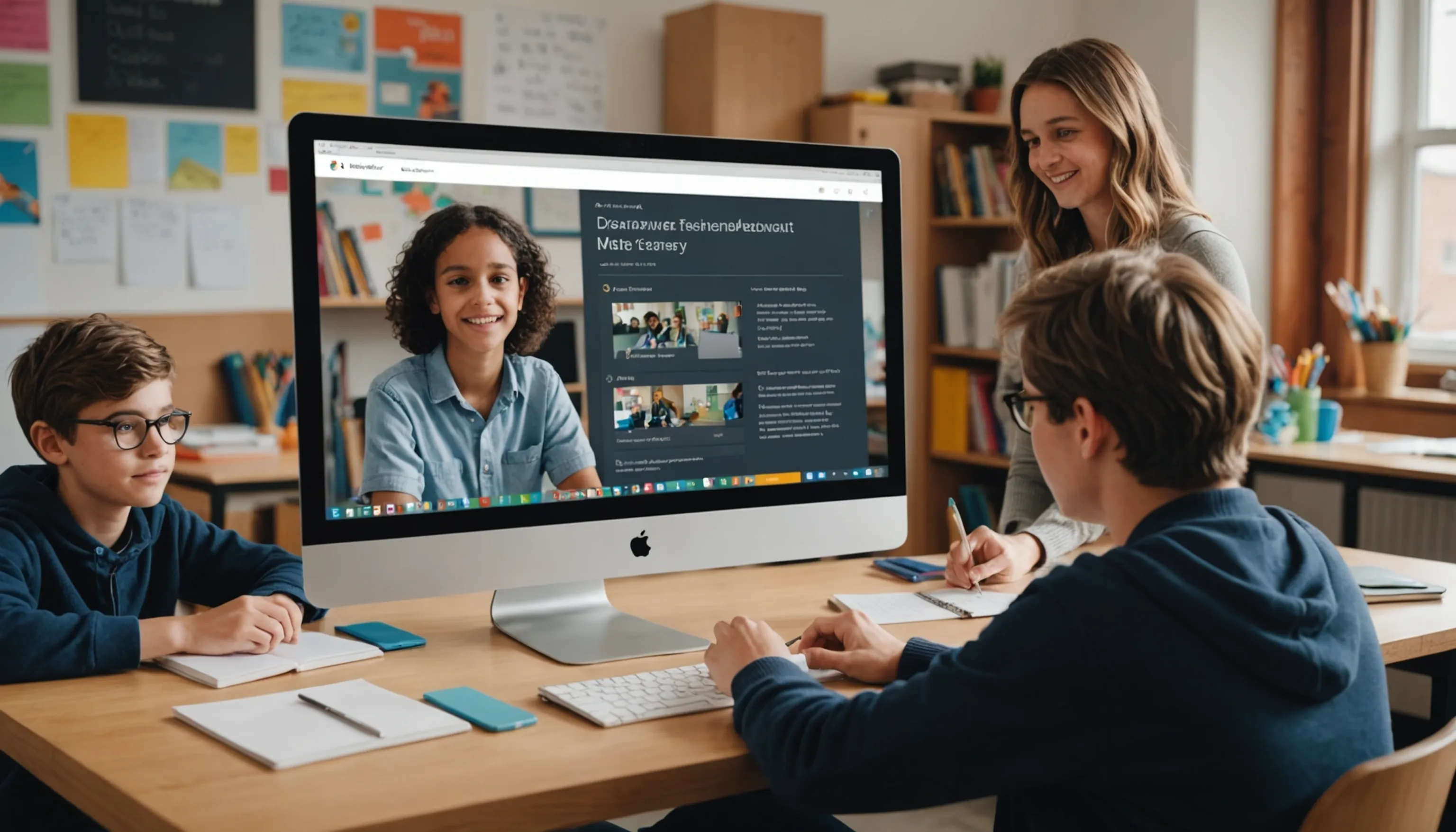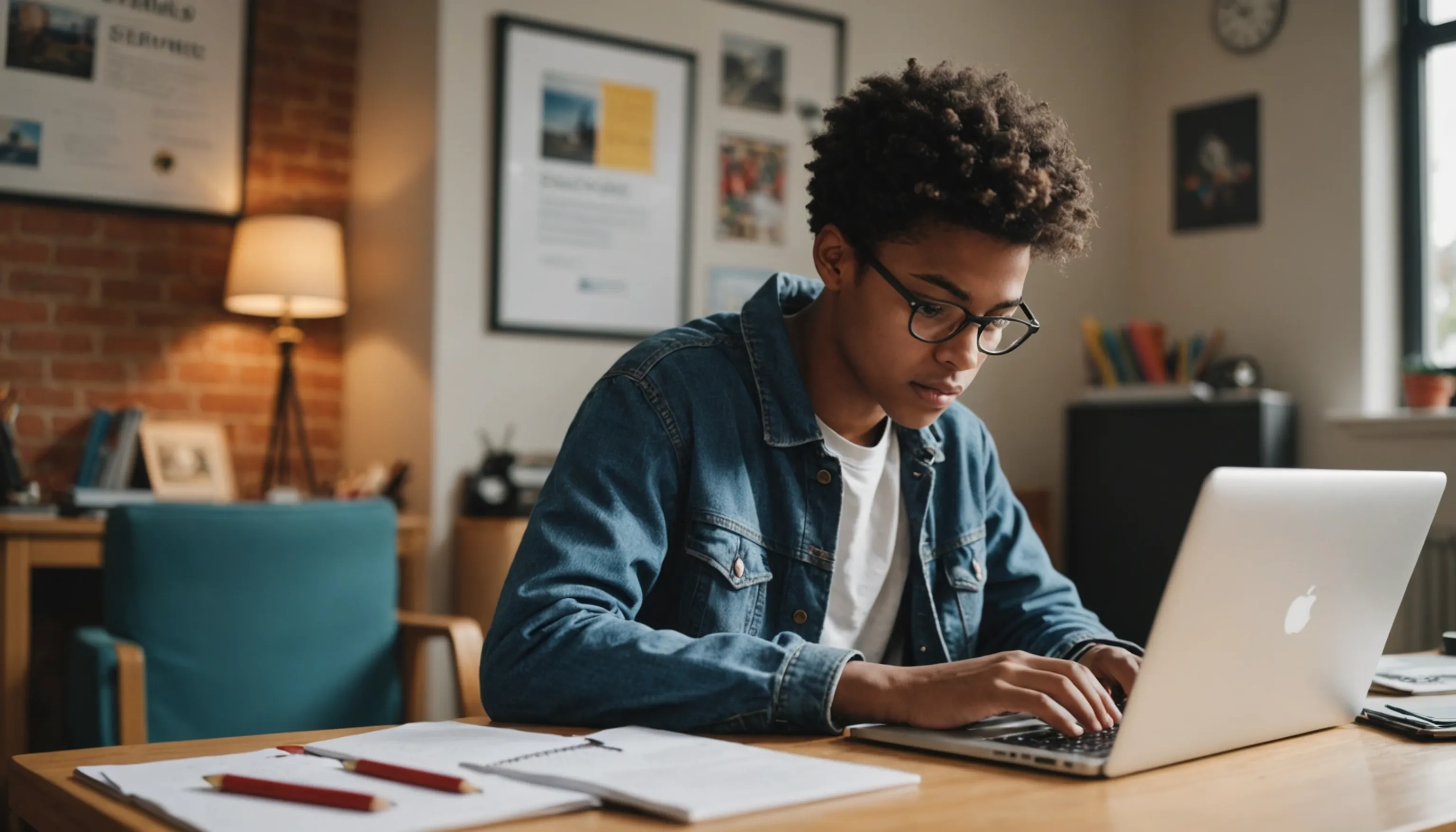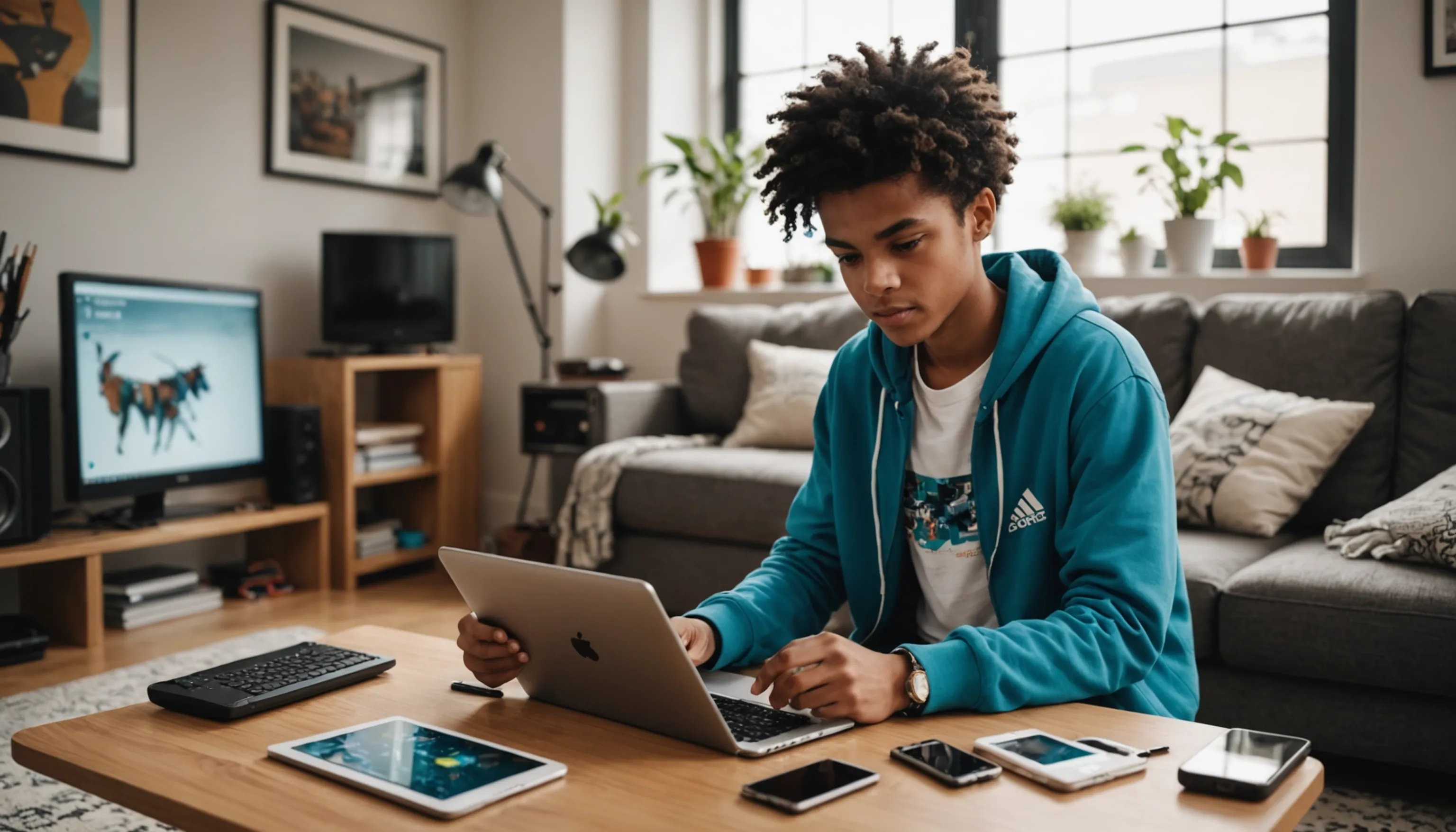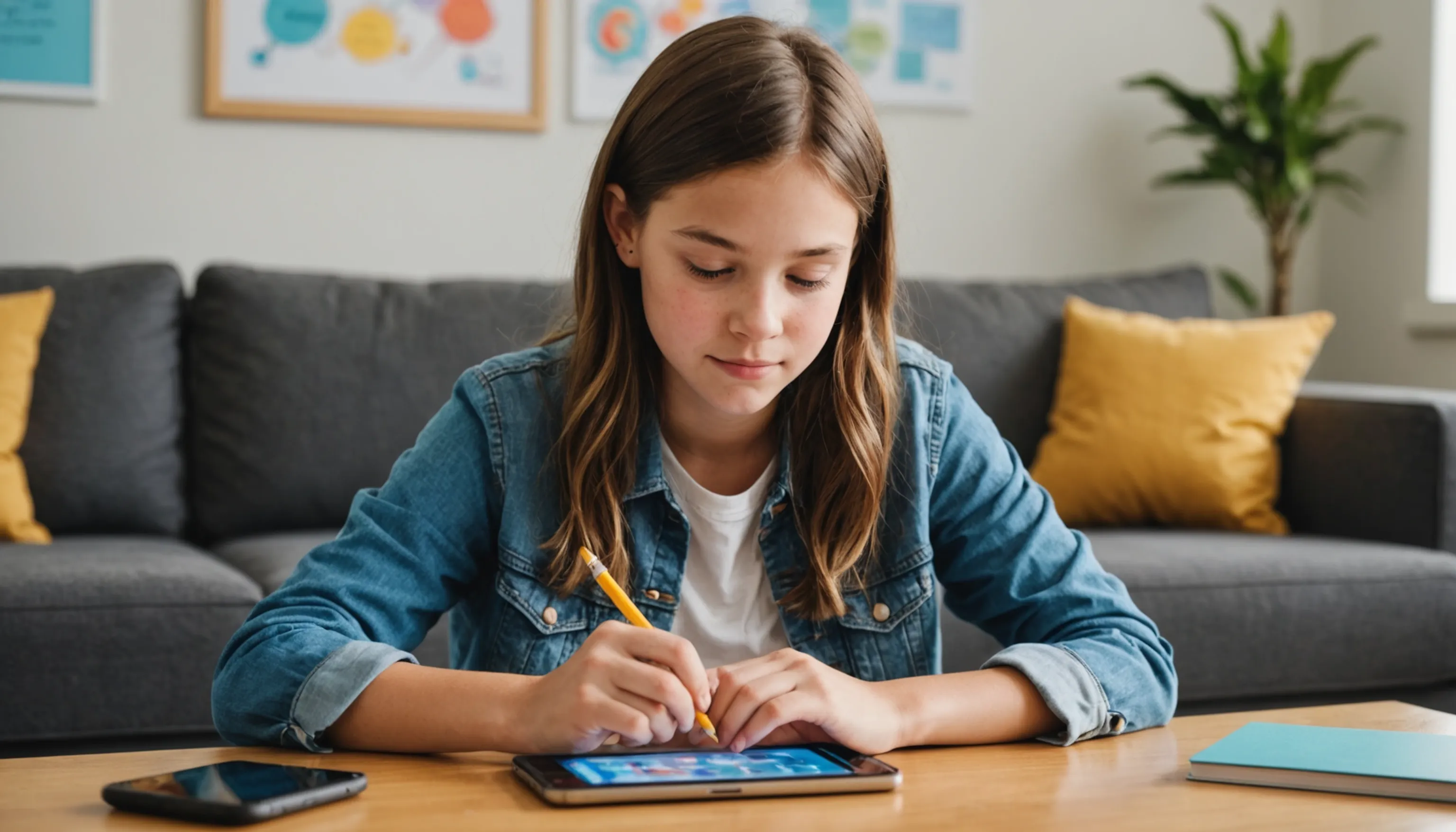How to Make Educational Screen Time Effective
 HvWHenry van Wagenberg
HvWHenry van Wagenberg
Making Educational Screen Time Effective for Teenagers
Making educational screen time effective for teenagers involves a strategic approach that maximizes learning while minimizing distractions. It's essential to set clear objectives for what you want to achieve during this time. Begin by selecting high-quality educational content that aligns with these goals, such as informative videos, interactive lessons, or engaging apps.
Additionally, encourage active participation by asking questions and promoting discussions about the content. This not only enhances understanding but also keeps teenagers engaged. By creating a structured environment for educational screen time, you can foster a positive learning experience that integrates technology into their education.
Understanding the Importance of Educational Screen Time
Understanding the importance of educational screen time is crucial for both parents and educators. In today's digital age, screens are an integral part of teenagers' lives, and harnessing this technology can significantly enhance their learning experiences. Research has shown that when used effectively, screen time can improve academic performance and facilitate the acquisition of essential skills.
One of the key benefits of educational screen time is access to a vast array of resources. Teenagers can explore interactive lessons, watch instructional videos, and participate in online courses that cater to their interests and learning styles. This flexibility allows them to learn at their own pace, which can boost motivation and retention.
Moreover, educational screen time promotes the development of critical thinking and problem-solving skills. Many educational apps and platforms encourage teenagers to engage in creative activities, collaborate with peers, and tackle real-world challenges. These experiences prepare them for future academic pursuits and the workforce.
It is essential, however, to strike a balance. While screen time can be beneficial, excessive use can lead to negative outcomes such as decreased physical activity and social interaction. Therefore, it's vital to set boundaries and encourage a healthy relationship with technology.
In conclusion, by recognizing the importance of educational screen time and implementing strategies to enhance its effectiveness, parents and educators can help teenagers harness the power of technology for their academic growth and personal development.
Setting Clear Goals for Screen Time
Setting clear goals for screen time is essential for ensuring that teenagers use their devices effectively and productively. Without specific objectives, screen time can easily devolve into mindless browsing or entertainment consumption, which does not contribute to learning or personal growth. To make the most out of educational screen time, parents and educators should collaborate to establish meaningful goals.
First, identify what you want the teenager to achieve during their screen time. Goals can range from mastering a particular subject, completing online assignments, or enhancing specific skills like coding or language acquisition. For instance, a parent might set a goal for their teenager to complete a math module on an educational platform within a week.
Next, ensure that these goals are measurable. This means setting milestones that can be tracked over time. For example, if the goal is to read a certain number of articles or watch a set number of educational videos, create a checklist that allows the teenager to visualize their progress.
Furthermore, incorporate flexibility into the goal-setting process. As teenagers engage with content, they may discover new interests or areas where they need more focus. Regularly revisiting and adjusting goals can keep them relevant and motivating.
Finally, communicate the importance of these goals with teenagers. When they understand why they are working towards specific objectives, they are more likely to stay engaged and committed to their educational screen time.

Choosing the Right Educational Content
Choosing the right educational content is vital for maximizing the benefits of screen time for teenagers. Start by identifying resources that align with their interests and learning objectives. Look for platforms that offer interactive lessons, engaging videos, and relevant applications. Websites like Khan Academy, Coursera, or educational YouTube channels can provide valuable material.
Additionally, prioritize content that promotes critical thinking and problem-solving skills. Avoid overly simplistic or entertainment-focused material. By selecting high-quality educational resources, you can enhance your teenager's learning experience and keep them motivated and engaged in their studies.
Apps and Websites That Enhance Learning
In today's digital landscape, numerous apps and websites can significantly enhance learning for teenagers. Selecting the right tools can transform screen time into a productive educational experience. Here are some noteworthy options:
- Khan Academy: This platform offers free courses on various subjects, including math, science, and humanities. With interactive exercises and instructional videos, it caters to different learning paces.
- Duolingo: For those interested in language learning, Duolingo gamifies the process. Its engaging interface motivates teenagers to practice daily, enhancing vocabulary and grammar skills.
- Quizlet: Quizlet allows students to create flashcards and study sets, making it easier to memorize information. The app also includes games and tests to reinforce learning.
- Coursera: This platform partners with universities to offer courses on various topics. Teenagers can explore subjects that pique their interest, from computer science to arts.
- TED-Ed: TED-Ed provides animated educational videos on a wide range of topics. These short, engaging videos make complex concepts more accessible and encourage critical thinking.
Additionally, platforms like Edmodo and Google Classroom facilitate collaboration and communication between students and teachers, enhancing the overall learning experience. By leveraging these apps and websites, parents and educators can create an enriching environment that promotes academic growth while keeping teenagers engaged and motivated.
Incorporating Interactive Learning Tools
Incorporating interactive learning tools into educational screen time can significantly enhance the learning experience for teenagers. Unlike traditional methods, interactive tools engage students actively, making learning more enjoyable and effective. Here are some strategies to integrate these tools into their routine:
First, consider using platforms that offer interactive content. For example, online learning sites like Nearpod and Pear Deck allow teachers to create interactive presentations where students can participate in real-time quizzes, polls, and discussions. This not only encourages active participation but also fosters collaboration among peers.
Next, utilize educational games that reinforce concepts in a fun way. Websites like Kahoot! enable teachers and parents to create quizzes that students can answer using their devices. This gamification of learning can boost motivation and retention, as students are more likely to remember information when it's presented in a playful manner.
Moreover, consider incorporating simulation tools for subjects like science or math. Programs such as PhET Interactive Simulations allow teenagers to experiment with complex concepts in a virtual environment, deepening their understanding through hands-on experience.
Lastly, encourage the use of coding platforms like Scratch or Code.org. These tools not only teach valuable programming skills but also promote logical thinking and creativity.
By integrating these interactive learning tools into screen time, parents and educators can create a dynamic educational environment that keeps teenagers engaged and fosters a love for learning.

Balancing Screen Time with Offline Activities
Balancing screen time with offline activities is crucial for teenagers’ overall well-being and development. While educational content on screens can enhance learning, excessive screen use can lead to physical inactivity and social isolation. Encourage teenagers to engage in offline activities such as sports, reading, or arts and crafts. Set specific time limits for screen use and create a schedule that includes both educational screen time and time spent outdoors or with family and friends. By promoting a healthy balance, you can help teenagers develop a well-rounded lifestyle that fosters both academic success and personal growth.
Encouraging Physical Activity Alongside Screen Time
Encouraging physical activity alongside screen time is essential for maintaining teenagers’ health and well-being in a technology-driven world. As screens become more prevalent in their daily lives, it’s crucial to promote an active lifestyle to counterbalance sedentary behavior. Here are some effective strategies to achieve this balance:
First, integrate physical activities into their daily routine. For instance, suggest short exercise breaks between study sessions or screen time. Activities like stretching, quick workouts, or even a brisk walk can refresh their minds and bodies.
Second, leverage technology to promote fitness. Many apps and platforms focus on physical activity, such as Fitbit or MyFitnessPal, which encourage tracking workouts and setting fitness goals. Additionally, consider fitness video games that require movement, such as Just Dance or Ring Fit Adventure. These games make exercising fun while allowing teenagers to enjoy screen time.
Moreover, encourage participation in sports or outdoor activities. Organizing family outings like hiking, biking, or playing sports together can create a sense of community and motivation. Make it a goal to engage in physical activities at least a few times a week.
Lastly, emphasize the importance of a balanced lifestyle. Discuss the benefits of physical activity, such as improved mood, better focus, and enhanced academic performance. By fostering an environment that values both screen time and physical activity, you can help teenagers develop healthy habits that last a lifetime.
Creating a Screen Time Schedule
Creating a screen time schedule is an effective way to manage teenagers' use of technology while ensuring they benefit from educational content. A well-structured schedule helps balance screen time with other important activities, fostering a healthier lifestyle. Here are some steps to develop a practical screen time schedule:
First, assess your teenager's daily routines and commitments, including school, homework, and extracurricular activities. Identify the optimal times for screen use, ensuring it doesn’t interfere with essential tasks. For example, designate specific hours for educational activities, leisure screen time, and physical exercise.
Next, involve your teenager in the scheduling process. Discuss their preferences and allow them to express when they feel most focused and productive. This not only empowers them but also encourages responsibility in managing their time.
Once a draft schedule is created, make it visible and accessible, such as posting it on a family bulletin board or using a shared digital calendar. This promotes accountability and serves as a reminder of their commitments.
Additionally, incorporate flexibility into the schedule. Life can be unpredictable, so allow for adjustments when necessary. For example, if a school project requires extra screen time, accommodate that while ensuring they maintain a balance with offline activities.
Finally, regularly review and adjust the schedule as needed. Engage in open conversations about screen time use and its impact on their overall well-being. By fostering a structured approach to screen time, you can help teenagers develop healthy habits that support their academic and personal growth.
Monitoring and Discussing Screen Time Use
Monitoring and discussing screen time use is crucial for ensuring teenagers engage with technology responsibly and effectively. Begin by tracking the amount of time spent on different activities, including educational content and leisure. Use apps or built-in features on devices to help with this. Regularly sit down with your teenager to review their screen time habits and discuss what they’re learning or enjoying.
Encourage open dialogue about their experiences online, addressing any concerns or issues they may encounter. This not only fosters accountability but also helps build a trusting relationship, ensuring they feel comfortable discussing their digital lives.
Tracking Progress and Engagement
Tracking progress and engagement in screen time activities is vital for ensuring that teenagers are benefiting from their educational experiences. By monitoring their engagement with content, parents and educators can identify what works best and make necessary adjustments to optimize learning. Here are some effective strategies for tracking this progress:
First, establish clear benchmarks for success. These could include completing specific educational modules, achieving certain scores on quizzes, or spending a designated amount of time on productive activities. Setting these goals allows teenagers to have a clear understanding of what is expected of them.
Next, utilize tracking tools and apps that can provide insights into how much time is spent on various activities. Applications like RescueTime or built-in screen time features on devices can help analyze usage patterns, identifying both productive and unproductive screen time.
Regularly review the data collected with your teenager. Discuss their achievements and areas where they may be struggling. This open dialogue can help them reflect on their learning experiences and adjust their approach as needed. Encourage them to celebrate their successes, no matter how small, to boost motivation.
Incorporate feedback mechanisms, such as self-assessments or reflective journaling, where teenagers can express their thoughts on what they learned and enjoyed. This practice not only promotes self-awareness but also emphasizes the importance of engaging deeply with educational content.
By actively tracking progress and engagement, parents and educators can foster a supportive environment that encourages continuous learning and personal growth.
Having Open Conversations About Content
Having open conversations about content is essential for guiding teenagers through their screen time experiences. As they navigate various online platforms, discussing the material they encounter can foster critical thinking and ensure they engage with appropriate and educational content. Here are some strategies to facilitate these discussions:
First, create a safe space where teenagers feel comfortable sharing their thoughts and opinions about the content they consume. Encourage them to express their feelings about different topics, whether it's a video they watched, an article they read, or a game they played. Ask open-ended questions that promote deeper reflection, such as, "What did you learn from that video?" or "How do you think this game relates to real-world issues?"
Next, guide them in evaluating the credibility of sources. Discuss the importance of distinguishing between reliable and unreliable information. Encourage teenagers to question the motives behind the content they consume and to seek out multiple perspectives on a topic.
Additionally, share your own insights and experiences. By providing context and your perspective, you can help teenagers understand different viewpoints and the complexities of various issues. This exchange of ideas promotes a richer understanding of the content.
Finally, reinforce the importance of balancing entertainment with educational value. Discuss how certain content can be both enjoyable and informative, allowing them to appreciate the benefits of engaging with diverse materials. By having open conversations about content, parents and educators can empower teenagers to become discerning consumers of information, fostering lifelong learning habits.
